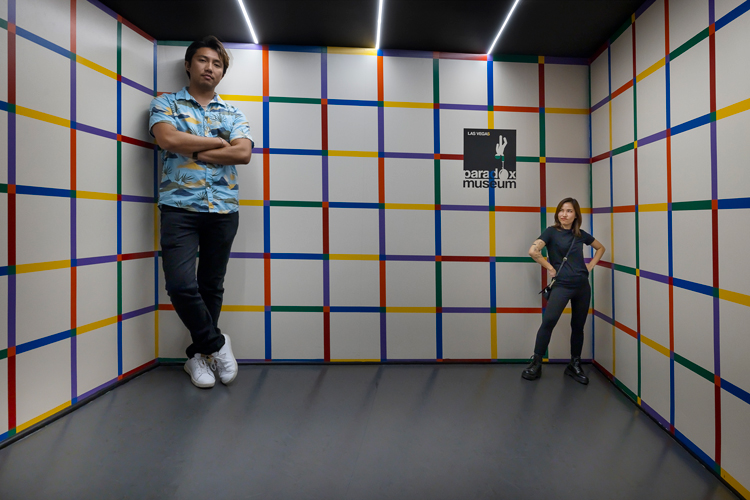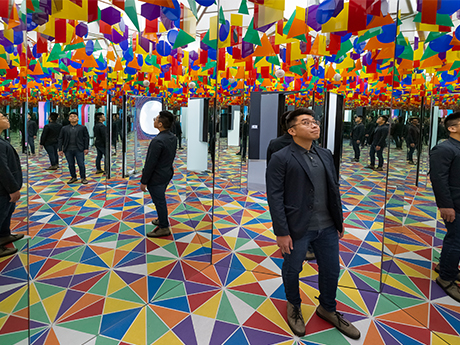— By Anthony Sanchez, design director and principal, Nadel Architecture + Planning —
Consumers are heading back to the shopping mall, which is great news for retail owners, operators and tenants that rely on in-person sales and experiences as part of their respective business models.
According to Placer.ai, February and March of this year saw a steady rise in foot traffic at malls nationally. Indoor malls sit just 5 percent below their pre-pandemic foot traffic levels, while open-air shopping malls surpassed 2019 levels for the first time since the pandemic.
The trend marks an incredible resiliency for the retail space, especially as financing and inflationary issues loom over the economy. But with all these shoppers coming back to the mall, the question is: will they recognize it?
Anchors Entering a New Era
With news of some larger retailers like Macy’s and the Dollar Store closing locations en masse, developers are chomping at the bit to reimagine those spaces. There is exciting potential to recreate them within malls in ways that enhance the overall shopping experience for consumers and attract new foot traffic – all to the benefit of the existing retailers at the shopping center.
The result might be a stark but appealing contrast to traditional expectations. Long-time department stores can be transformed into community areas, multifamily designs can be integrated within the mall, and hospitality- and/or dining-oriented attractions can fill this back space.
The key will be for mall owners to remain flexible and adapt to the current cultural and experiential retail trends. This is especially critical in the Western U.S. where open-air options and an increased focus on luxury have proven very successful. While major retail department stores were once the anchor business of any shopping center, the slow decline of the department store has forced a rethink.
The challenge for existing properties has been that most retailers (like Macy’s) control the retail space even after they vacate. Repurposing the empty square footage is difficult without getting the retailer to agree. However, Macy’s has shown a new willingness to allow innovative changes to the spaces they control. From co-working spaces to mixed-use entertainment venues, former department stores are finding new life and bringing customers back to the mall.
Fortunately, the concept of an anchor tenant no longer relies on the department store in new construction projects. Today, grocery stores serve as primary anchors for many new shopping centers. For example, Sprouts serves as anchor of the first phase of Vineyard Towne Center, a 23-acre retail development by Vestar in Queen Creek, Ariz. Vineyard is one of nine new retail complexes under construction in Arizona after a 15-year drought of new retail.

Luxury and Dining are for Everyone
One important aspect of Macy’s recent store closure announcement is its plan to convert some of the closed outposts into Bloomingdale’s, the retail giant’s better-performing upscale brand. That’s because, as mentioned, luxury is a draw.
Take South Coast Plaza, an upscale mall in Orange County, Calif. It saw a 7.3 percent increase in foot traffic in 2023 over 2022. This is compared to a 4.3 percent increase in traffic at shopping centers across the state.
Fashion Square in Scottsdale, Ariz., also recorded a 9.3 percent increase versus 3.5 percent for the state’s overall retail foot traffic average. There’s no question that luxury brands can help bring much-needed foot traffic to the remainder of mall tenants.
The food court and fast-casual offerings were once the main dining experience of most mall visitors, but that has changed as well. Malls that bring in restaurants more typical of stand-alone locations have seen increases in overall foot traffic. Today’s thinking is “come to eat, stay to shop.” Or shop while you’re waiting to be seated.
A good example of this is Southgate Mall in Missoula, Mont. The shopping destination opened a Texas Roadhouse last November and has experienced a year-over-year increase in foot traffic every month since the opening.
Consumers Want Retail Experiences
Retail has become about more than just perusing the aisles and finding your purchase. Sporting goods retailer Scheels opened a new store at Chandler Fashion Center in Chandler, Ariz., that includes a Ferris wheel and a huge salt-water aquarium, This addition has increased foot traffic at the mall by nearly 50 percent in the first month of business. Nadel has worked with a new retail concept called the Oddie District in Sparks, Nev., to convert a former Lowe’s Improvement Center into a multi-use retail, dining and community arts center that has revitalized a once-bustling retail corridor.
Retail Needs to Reflect Current Culture
Retail adaptability is not just about leasing space to a new restaurant or replacing one big box store with another. The success in driving increased foot traffic or meeting the shift in shopper behavior through changes to the shopping center are backed by other cultural trends. This includes the rise of organic grocery stores, an increased importance on engagement, and dining-out trends like steakhouses or family friendly beer gardens.
The needs of today’s malls are driven by the tastes and cultural preferences that dominate current society. That means today’s malls may start to become unrecognizable when compared to the malls of the past. However, as tomorrow’s shopping centers adapt with the times, more will closely reflect the wants and expectations of the American consumers.
— This article originally appeared in the May issue of Western Real Estate Business magazine.


